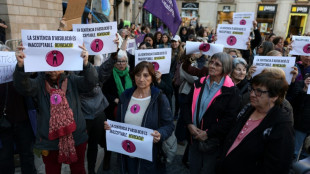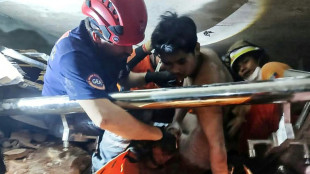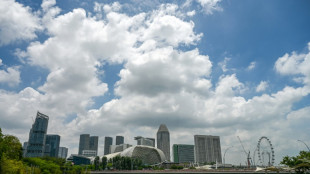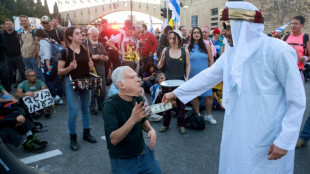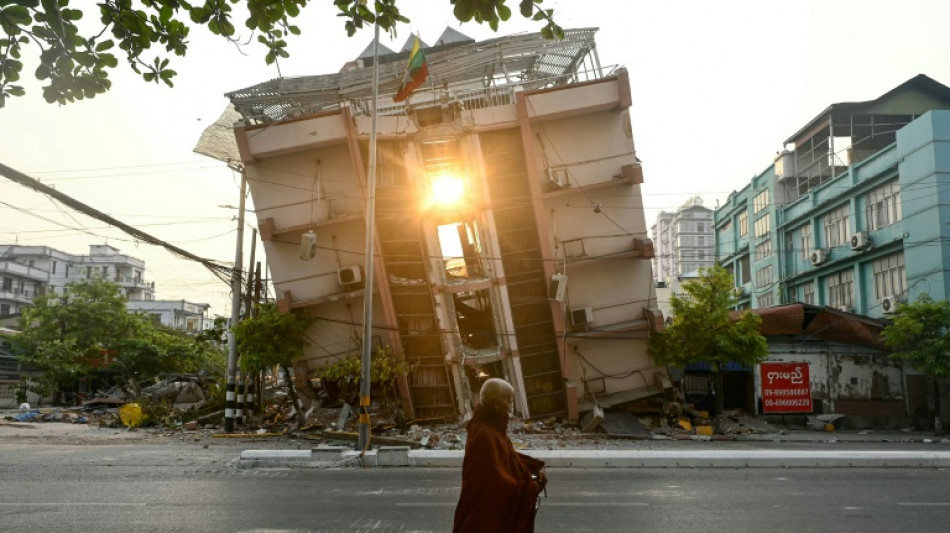

'Can collapse anytime': Mandalay quake victims seek respite outdoors
After a night sprawled out on cardboard panels under hastily erected plastic tarps, hundreds of Mandalay residents awoke Tuesday to more earthquake recovery work, wondering when they can return safely to permanent shelter.
The violent 7.7-magnitude earthquake struck Friday near the city in central Myanmar, killing more than 2,000 people, with fears the toll could rise significantly.
Initial tremors destroyed many homes across the city, and persistent aftershocks have left the residents of those spared wary of spending time indoors.
"We don't dare to go back home because we are worried our neighbouring building will collapse on us," said 57-year-old grandmother Hlaing Hlaing Hmwe.
"Children want to go back because the weather is hot here," she said.
Temperatures on Tuesday in the city of more than 1.7 million people again approached 40 degrees Celsius.
Hlaing Hlaing Hmwe said they won't be able to endure it much longer, so she is considering going to a monastery in search of shelter.
"We heard monasteries collapsed too but there is another one we can go to."
Though sleeping in the open relieves one of the risk of falling buildings, Soe Tint said that basic amenities such as water, electricity and access to toilets are difficult to come by.
Still, it is preferable to the potential danger of being inside.
"We don't feel safe to sleep at our home," said the 71-year-old Mandalay resident. "So we moved to this field".
The buildings next to his home are as high as six or seven storeys, and he said they are now leaning due to the tremors.
"I even think my own heartbeat is an earthquake."
- Uncollected belongings -
At the U Hla Thein Buddhist examination hall, where part of the building collapsed as hundreds of monks took an exam, at least 60 uncollected book bags were piled on a table outside.
Textbooks, notebooks and passports were among the contents.
"These are the belongings of the monks who sat the exam," said one attendant, adding there was a second pile elsewhere.
Fire engines and heavy lifting vehicles were parked outside and an Indian rescue team worked on the pancaked remains of the building.
One Indian officer said there was a terrible smell coming from the building.
"We don't how many people are under the structure," he said.
A Myanmar fire official confirmed: "Many dead bodies are coming out. There can be no survivors."
Complicating recovery efforts is the country's brutal ongoing civil war, sparked in 2021 when a military junta ousted Aung San Suu Kyi's civilian government.
Since then, fighting between the military and a complex patchwork of anti-junta forces has left Myanmar's infrastructure and economy in tatters.
The country is observing a week of mourning, as announced by the junta, with a minute of silence held Tuesday at 12:51:02 (0621 GMT) -- the precise time the quake struck four days before.
In a compound on Tuesday next to Mandalay University, a Myanmar flag flew at half-mast, its yellow, green and red stripes stirred by a desultory breeze.
Traffic has picked up in the city since the quake, but one driver said it was still less than usual.
Soe Tint, who relocated to the field with his family, is eager to return to the comforts of home.
"No one knows how long it will take," he said.
burs-pfc/aph/hmn
L.Sabbadin--IM
